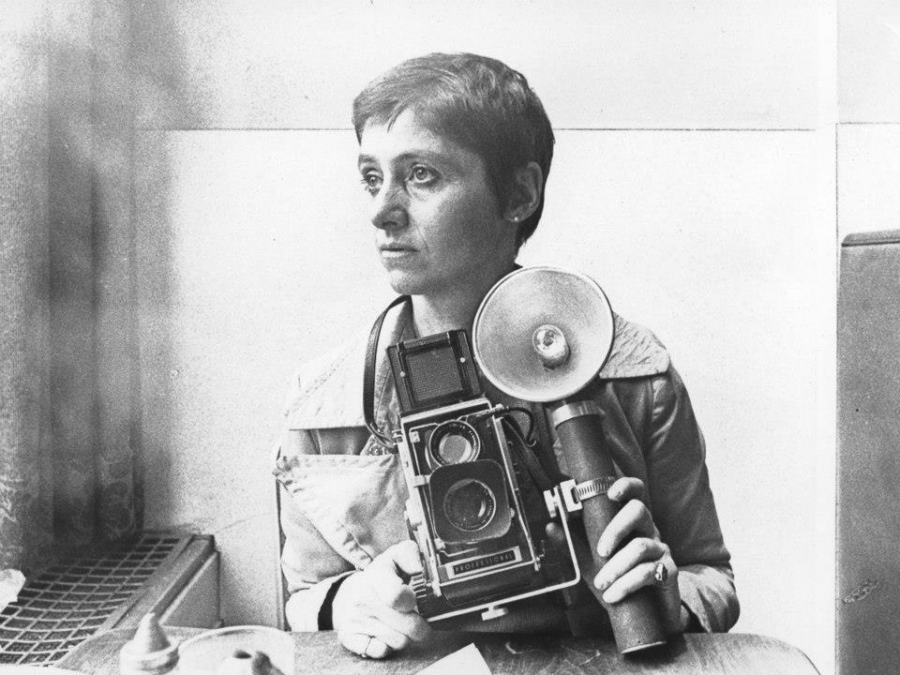What is theater? What is performance? What does it mean to watch? To be watched? Tisch Drama Stage’s “Fiction,” running through March 2 at Tisch’s Abe Burrows Theater, isn’t afraid to address these weighty questions, even if the work doesn’t have any easy answers.
“Fiction” is a new experimental performance piece from theater company 600 Highwaymen, the moniker of theatermakers Abigail Browde and Michael Silverstone. It’s a strange work, daring and engaging, destabilizing audience expectations while still remaining surprisingly intelligible.
The piece subverts theater conventions right from the start. The house lights still illuminating the audience, three people emerge from a door at the rear of the stage, spreading out across the space. “This is a picture of a tornado,” one says, and the show begins.
The performer (Beatriz Soares da Silva) recites a brief monologue, addressing the audience as the others onstage observe. She moves and contorts her body through fluid choreography as she speaks, before passing the baton on to another performer. Others appear, until there are eight onstage.
It quickly becomes clear that there are no characters or narrative in the traditional sense. The performers speak mostly in monologue, cycling through repetitive movements as they do — raising their arms in the air and bending sideways at the waist, leaning forward before swinging their arms up. Without clear individual roles, the performers seem interchangeable, only occasionally referring to themselves in ways plausibly rooted in their specific backgrounds and appearances. The individuality of each performer is questioned as they begin to blur together.
Speaking in declarative sentences — “I used to live in this neighborhood,” one says. “I was here before you” — the performers each in turn embody variations of a single character, a woman named Diane who died in 1971. It slowly becomes apparent that this Diane is Diane Arbus, one of the most famous photographers of the 20th century.
Best known for her black and white photographs of people on the periphery of society — transgender people, disabled people, sex workers — Arbus is today often thought of as having been an outsider herself. She took her own life in 1971, at the age of 48, having achieved only a tiny fraction of the recognition she would gain after her death.
Arbus’ photographs — of people that the rest of society would rather forget exist — insist on the subjectivity of their subjects, on the capability of these people to see and be seen.
“Fiction” engages with Arbus’ work, biography and legacy, drawing from each questions about entertainment and spectacle, spectatorship and performance, empathy and identification.
“You’re on one side; I’m on another,” says one performer. “Between us is a gulf.”
“I don’t know what you see, but I feel you seeing it,” says another.
Each performer shifts between multiple modes — between different versions of Arbus, and through what seem to be versions of themselves, reflecting on both Arbus’ life and their own.
Browde and Silverstone — the Tisch Drama Spring 2019 Artists in Residence, and both Tisch Drama alumni — wrote and directed the piece, working collaboratively with the cast of Tisch Drama undergraduates over several weeks to shape the piece into its final form. Rather than an inflexible script with rigid characters, “Fiction” draws its power from the blurring of the distinction between playwright and performer, and between performer and spectator.
Other traditional theatrical conventions are also effectively twisted and subverted. There are interludes of pure movement, as the performers circle the stage in pairs, mirroring one another as they run, hop, fall and embrace. Jarringly, the performers are dressed in street clothes, as if they had wandered onstage from class — “We’re both wearing clothes,” says one performer. “Mine is a costume” (costume design by Ricky Reynoso). The set design by Taylor Anne Friel is minimal, comprising an expanse of yellow carpet extending from three walls of the black-box theater to the first row of seats — a blank canvas of sorts.
But the most powerful subversion is also the least material — the lighting design, by Katherine M. Craig. The house lights remain lit throughout the first part of the performance, doing away with the darkness that traditionally signifies the boundary between performer and audience. When the lights do come down, they flicker off suddenly both offstage and onstage, plunging the theater into a startling darkness. Rather than receding into the background, the lighting design asserts itself as a presence.
Incorporating archival audio footage of Arbus and her daughter Doon Arbus near the piece’s end, “Fiction” circles back to the woman who inspired it. Each performer takes turns reading excerpts from Arbus’ letters aloud, as she meditates on some of the big questions that the performance poses.
Just as “Fiction” insists on the value of being seen, and on the strange, tangled relationship between seeing and being seen, we understand the importance of remembering the artist whose work both asks and elicits these questions.
“I see you,” says a performer. “I see you, Diane.” And so do we.
“Fiction” is running at the Abe Burrows Theater at the Tisch School of the Arts, 721 Broadway, through March 2.
Email Alex Cullina at [email protected].























































































































































